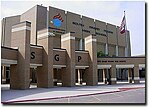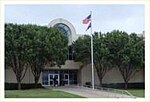Grand Prairie, Texas
1863 establishments in TexasCities in Dallas County, TexasCities in Ellis County, TexasCities in Tarrant County, TexasCities in Texas ... and 6 more
Cities in the Dallas–Fort Worth metroplexGrand Prairie, TexasPages with non-numeric formatnum argumentsPopulated places established in 1863Use American English from May 2022Use mdy dates from May 2022

Grand Prairie is a city in Dallas, Tarrant, and Ellis counties of Texas, United States. It is part of the Mid-Cities region in the Dallas–Fort Worth metroplex. It had a population of 175,396 according to the 2010 census, making it the fifteenth most populous city in the state. Remaining the 15th-most populous city in Texas, the 2020 census reported a population of 196,100.
Excerpt from the Wikipedia article Grand Prairie, Texas (License: CC BY-SA 3.0, Authors, Images).Grand Prairie, Texas
Huntington Drive, Grand Prairie
Geographical coordinates (GPS) Address Nearby Places Show on map
Geographical coordinates (GPS)
| Latitude | Longitude |
|---|---|
| N 32.715277777778 ° | E -97.016944444444 ° |
Address
Huntington Drive 2100
75051 Grand Prairie
Texas, United States
Open on Google Maps


